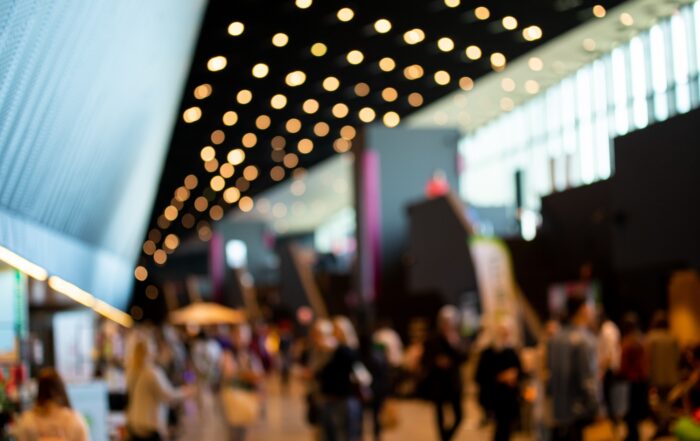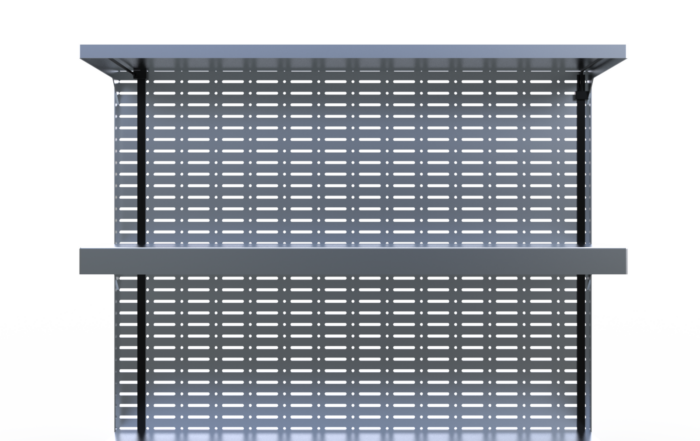Discover how you can implement grocery store LED lighting to improve your sales and keep customers coming back! How do you check the quality of the food you buy each week? The lighting at a grocery store can make or break your shopping trip. Do you want to know the effects of bad lighting on a grocery shop and the dangers you may expose your customers to?
Grocery Store Lighting Relates to a Wide Range of Factors
The lighting impacts everyone in the business, from customers to workers to the wares themselves. So how does the way they look at supermarkets alter due to better lighting?
The Color Rendering Index (CRI) of a light source modifies how colors appear and are perceived by customers. Low Color Rendering Index prevents colors from being brought to life. Moreover, it will cause some products’ colors to run together. Customers can’t get a good look at the products because of this.
Lighting can also be affected by color temperature. CRI determines aspect ratio, but color temperature is just as important. Overly warm lighting can make fresh fruit look spoiled. Freshly baked bread will have an unattractive appearance under cold lights.
Even supermarkets aren’t immune to poor lighting. Glares, reflections, and a general lack of contrast can all be brought on by bright lighting, which means productivity, sales, and product presentation.
Possible Danger from Inadequate Lighting
Your grocery store could suffer from inadequate lighting. For instance, the warmth of your lights may affect your clientele and stock. The heat from the lights can be uncomfortable for customers and workers. When people feel uncomfortable in a place, they are less inclined to stay there. Customers may leave if the lighting is too warm.
Too much heat from the light source can potentially damage your merchandise. Hot lighting can shorten the shelf life of many fresh goods. Both incandescent and halogen lamps are notorious for their excessive heat output. Avoid putting incandescent and halogen bulbs near fresh produce; meats are preferable.
The increased cost of fixing the problems caused by inadequate lighting is a problem for grocery store operators. You may incur more repairs, labor, and energy charges if you skimp on quality lighting. In addition, in most cases, lower-quality bulbs necessitate more frequent maintenance and checking than their higher-quality counterparts.
The appearance of food and merchandise can be negatively impacted by improper color temperature. Colors can be classified as either chilly, neutral, or warm. Produce, food, and other things from the grocery store all benefit from being stored at various temperatures. Therefore, selecting varying color temperatures for use in multiple grocery store sections is vital. Those that run grocery stores at a single temperature are hurting their business and their bottom line.
Effective Grocery Store LED Lighting Techniques
Here are five suggestions for improving the illumination of your grocery store: hone in on the client, the shop, the product, the price, and the consultation!
Put the customer first
Businesses should prioritize consumer attraction and retention while lighting their establishments. As a grocery shop owner, you must establish a setting that makes your guests and customers comfortable. Visitors feel at ease and are more inclined to stay for longer. Customers are more likely to make a buy if they spend more time browsing your wares.
When picking up basic and decorative lighting, think about who you’re catering to. Most of the illumination in a retail establishment comes from general lights, sometimes called ambient lighting. It’s not just the brightest option; it also adds ambiance to the room. With the help of ambient lighting, you can set the tone for your business. Make your customers and visitors feel at ease by using general lighting effectively. Shoppers’ attention is captured and held by well-lit displays.
Concentrate on Your Grocery Store Layout
As mentioned before, a company’s lighting scheme can significantly affect the atmosphere. Be sure to highlight the store’s best features with the job and decorative lighting when designing the lighting for your grocery store. There are numerous positive effects of decorative lighting in supermarkets. Chandeliers, lamps, and pendant lights can all serve as grocery store LED lighting options. These lights are used to set the tone and identity of the grocery shop. Lighting design can also be used to express warmth and generosity.
Owners can add depth to space by layering light sources utilizing decorative and contrast lighting. For example, store managers can utilize contrast lighting to draw customers’ attention to specific sections of their grocery store. You can use this to highlight particular products or areas in your grocery store.
The success of a supermarket shop depends on adequate task lighting. Task lighting helps people do what they need to do, whether their employment or errands. For example, workers need task illumination to stock shelves, clean, satisfy customers, serve customers, and operate the cash register. In addition, customers can more easily move around the store, shop, and scrutinize items thanks to task illumination.
Drive attention to your products
Your grocery store’s offerings can be improved in several ways. Accent lighting, color temperature, and particular luminaires are the most frequent ways to make your merchandise appealing. In addition, glare-reducing lighting is available for purchase. Investing in this kind of lighting fixture eliminates the potential for glare and reflection, both of which detract from the presentation of your product.
You can draw attention to specific features or objects in a room using accent lighting. For example, by accent lighting, grocery store managers can draw attention to discounted goods, clearance items, and product displays.
The temperature of their colors sets the color of your goods. The color temperature you choose should improve the quality of the product. For instance, red lights indicate freshly prepared beef. Natural light brings out the best in produce, and in the bakery, warmer hues bring out the best in the bread’s texture.
Identify your Grocery Store LED Lighting Costs
Picking for a decent fixture while keeping costs down is a challenge every grocery store owner faces. There are specific preliminary inquiries to do when the price is the primary concern. Analyze the expenses of upkeep, the time and effort required for installation, the cost of energy, and the cost savings you can expect.
The upkeep of lower-quality lighting is usually higher. This is because labor costs are included in maintenance costs since they are necessary for keeping things in working order.
LEDs are the standard in grocery lighting. Light-emitting diodes (LEDs) use less power than traditional bulbs. When it comes to electrical bills, they’re cheaper, too. LEDs can reduce your energy use and, consequently, your electricity expenses.





